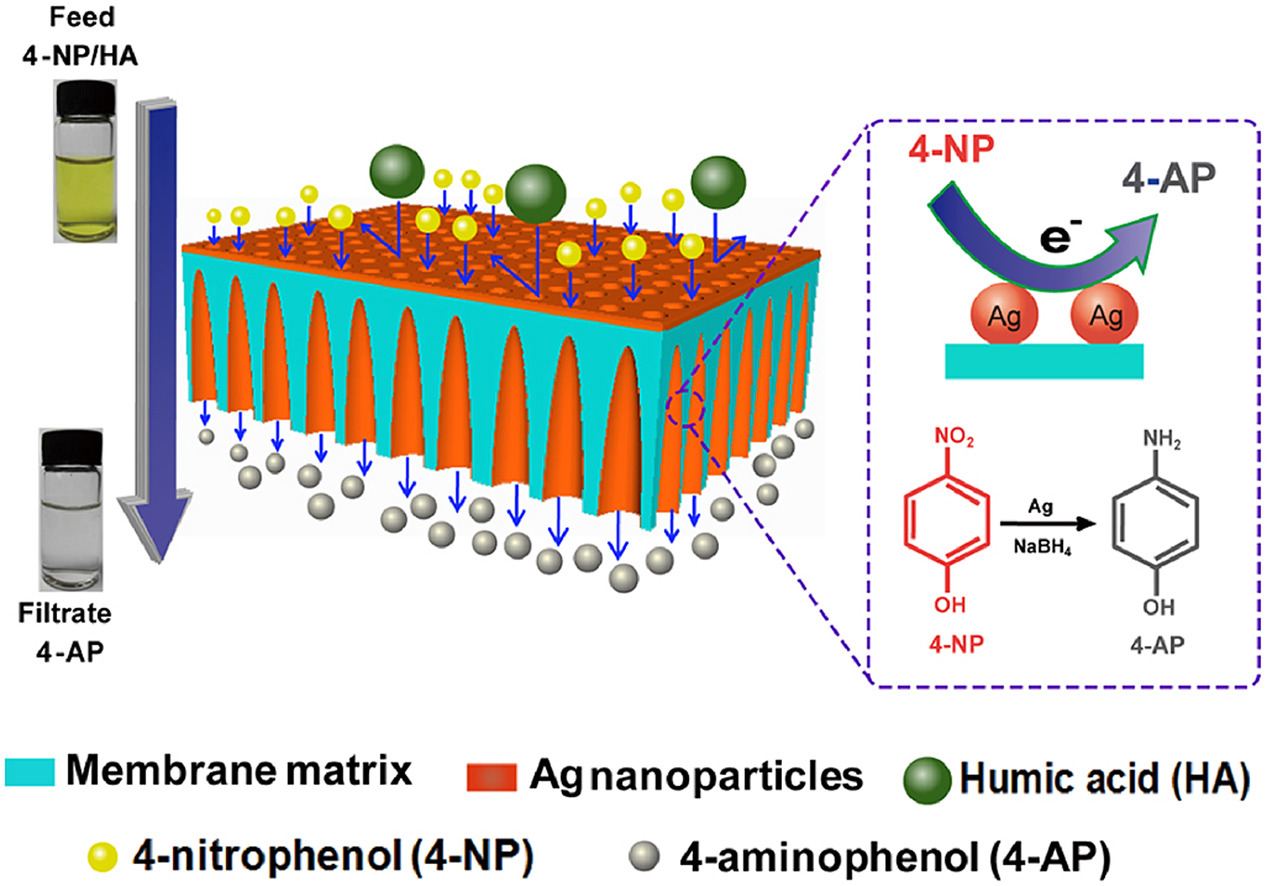


|
Xiaofeng Fang , Jiansheng Lia, Bangxing Ren , Ying Huang , Dapeng Wang , Zhipeng Liao , Qin Li , Lianjun Wang , Dionysios D. Dionysiou
Abstract
A novel ultrafiltration-catalytic membrane (UCM) loaded with Ag nanoparticles (NPs) within inner pores was designed via a facile in-situ blending and reduction method, for the simultaneous separation and catalysis of organic pollutants. Specifically, the natural polyphenol tannic acid (TA)-Fe complex was firstly blended in the polyethersulfone (PES) ultrafiltration (UF) membrane via the phase inversion method. The Ag NPs were formed and firmly anchored on the membrane by the catechol moiety in TA. The UF performance of UCM was evaluated with pure water permeability, bovine serum albumin (BSA) and humic acid (HA) rejection measurements. Maintainable pure water flux (239.8 L/m2 h), increased BSA rejection (96.1%) and excellent HA rejection (87.3%) were observed on UCM. The catalytic performance was evaluated in the reduction reaction of 4-nitrophenol (4-NP) as a target contaminant. The conversion of 4-NP was 98.0% for the catalysis of a mixture solution containing HA and 4-NP in dynamic mode, compared with that of 55.8% in static catalysis mode. This significant increase is due to the rejection of HA which was kept away from the Ag NPs in the inner pores, thus eradicating the negative effect of HA on the catalytic activity of Ag NPs. Moreover, UCM could be reused with high stability as it kept a conversion rate of higher than 95.0% for filtering the mixture solution over seven cycles. The results therefore demonstrate the UCM has good potential for continuous reduction of 4-NP as well as for the effective separation of macromolecular pollutants.


 在线咨询
在线咨询



